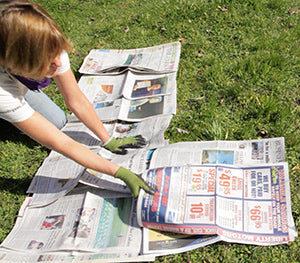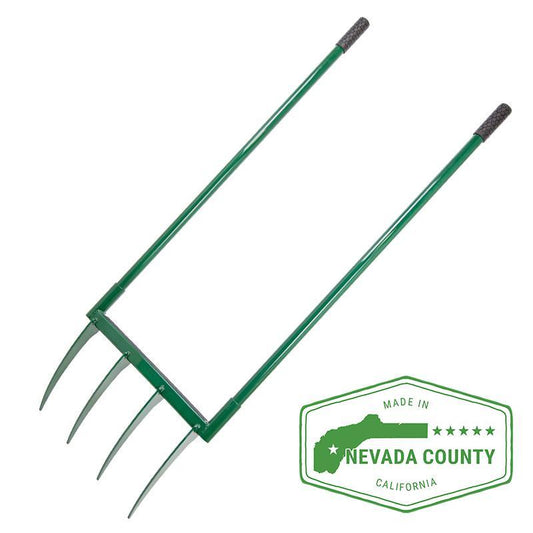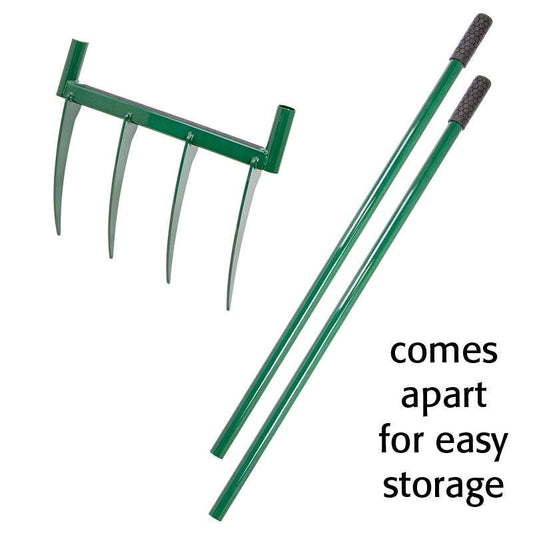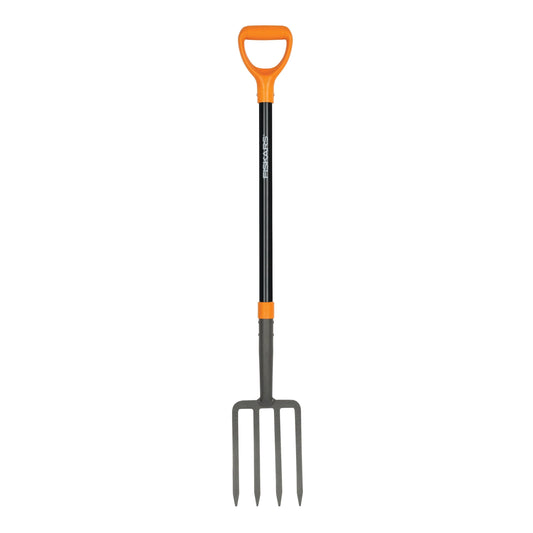No-Till Farming Trends Have Moved Into Home Gardening
Tilling has long been a hallmark of traditional gardening, making it easier to incorporate fertilizers, plant small seeds, and turn under weeds. Watching weeds disappear beneath the soil can be deeply satisfying, but what if you could achieve a healthy, productive garden without ever lifting a shovel again—and with fewer weeds than you have now? Enter no-till gardening, a method inspired by no-till farming trends that’s gaining traction among home gardeners for its ability to build soil health, reduce labor, and conserve resources.
Benefits of No-Till Gardening
A growing number of gardeners are discovering the transformative potential of no-till gardening, a method that avoids disrupting the soil. This approach has many benefits for your garden and the environment:
1. Promotes a Healthy Soil Food Web
Tilling disrupts the intricate network of life beneath the soil, including worm tunnels, fungal mycorrhizae, and colonies of beneficial microorganisms. A no-till garden allows this ecosystem to flourish, leading to healthier soil that supports robust plant growth. Earthworms, for example, aerate the soil naturally, and mycorrhizal fungi enhance nutrient uptake for plants.
2. Reduces Pest Problems
A thriving soil ecosystem creates natural checks and balances, reducing pest outbreaks. By avoiding soil disturbance, no-till gardening helps maintain this delicate balance. Pests are further discouraged when crop rotation is incorporated into no-till practices.
3. Minimizes Weed Growth
Surprisingly, tilling can actually encourage weed growth by exposing dormant weed seeds to sunlight, triggering germination. No-till gardening keeps these seeds buried under a protective mulch layer, where they’re less likely to sprout. Additionally, the mulch itself suppresses new weeds by blocking sunlight.
4. Conserves Water
Mulching heavily in a no-till garden reduces evaporation, keeping the soil cool and moist during hot summer months. This means less frequent watering and better water efficiency, especially when paired with drip irrigation.
5. Reduces Labor and Increases Sustainability
No-till gardening eliminates the physical labor of digging and tilling, making it an appealing option for gardeners looking to reduce their workload. It’s also more sustainable, as it preserves soil structure and reduces erosion over time.
Starting Your No-Till Garden
Transitioning to no-till gardening can feel daunting at first, but with the right steps, you’ll set yourself up for success:
1. Initial Setup
Some gardeners choose to begin their no-till garden by digging or double-digging the soil one time to incorporate compost and amendments. However, others skip this step entirely, laying down multiple layers of cardboard or newspaper directly on unworked soil or an existing lawn. This layer smothers weeds and grass.
Next, add a thick layer of compost, followed by mulch such as straw. This method, often referred to as lasagna gardening, creates nutrient-rich soil without ever turning it.
2. Create Permanent Beds and Paths
Designate permanent garden beds and walking paths. Never walk on the beds, as compacting the soil can harm its structure. If your beds are too wide to reach the middle, consider adding stepping stones or a narrow board for occasional access.
3. Install Drip Irrigation
Drip irrigation is ideal for no-till gardens. It delivers water efficiently to plant roots without compacting the soil. Install your irrigation system before adding mulch to ensure optimal water distribution.
4. Mulch Heavily
Apply a layer of mulch at least 8 inches deep—and up to 2 feet in some cases. Straw is a popular choice, but leaves, grass clippings, compost, and forest duff can also be used. Avoid using hay, as it may contain weed seeds.
Planting and Feeding Your No-Till Garden
Once your no-till garden is set up, maintaining and planting it is straightforward:
1. Fertilizing and Feeding
Nutrients can be added through top-dressing with compost or fertilizers. Foliar feeding and fertigation (applying liquid fertilizer through drip irrigation) are also excellent options.
2. Planting Seeds or Transplants
To plant, simply push back the mulch enough to expose the soil and sow your seeds or place your transplants. Once planted, return the mulch around the seedlings, leaving a small gap to ensure airflow.
Managing Weeds and Soil Health
While a well-maintained no-till garden dramatically reduces weed pressure, some weeds may still appear. Here’s how to manage them:
- Weed Regularly: Pull or chop weeds weekly to prevent them from going to seed.
- Replenish Mulch: Over time, mulch will decompose. Add more mulch as needed to maintain an 8-inch to 2-foot depth, ensuring the soil remains covered.
Overwintering in a No-Till Garden
Preparing your no-till garden for winter ensures its health and productivity in the following growing season:
- Mulch for Winter Protection: Add a thick layer of straw or other mulching material to insulate the soil and suppress winter weeds.
- Consider Cover Crops: If rodent problems arise from winter mulch, plant a cover crop like clover instead. Avoid grass-based cover crops, as they can be difficult to manage in a no-till system.
- Remove Cover Crops Carefully: When it’s time to plant again, remove the cover crop by hand-pulling, solarizing, or cutting it at the base.
Benefits Over Time
In your first year, your no-till garden may not reach its full potential as the soil adjusts to the new method. However, each successive year will bring improved soil structure, fertility, and productivity. By the second year, your garden will require less maintenance and produce healthier, more abundant crops.
Tips for Success in No-Till Gardening
- Test and Monitor Soil Health: Regular soil testing will help you track improvements in soil fertility and pH.
- Rotate Crops: Prevent pests and diseases by rotating crops each season.
- Experiment with Mulches: Test different mulching materials to see what works best for your garden.
- Be Patient: Soil ecosystems take time to establish. Trust the process and allow your garden to thrive naturally.
Why No-Till Gardening Is a Growing Trend
The rise of no-till gardening mirrors broader shifts toward sustainable and regenerative agriculture. As gardeners become more aware of the long-term impacts of tillage on soil health and ecosystem balance, many are embracing no-till methods as a way to grow food responsibly.
By reducing labor, conserving water, and fostering healthier soils, no-till gardening offers a path to more sustainable and productive home gardens. Whether you’re just starting or transitioning from traditional methods, this approach is worth exploring for its many benefits.
Conclusion
No-till gardening allows you to grow a productive garden with less effort while improving soil health and reducing your environmental impact. With heavy mulch, minimal disruption, and strategic planting, you can enjoy bountiful harvests year after year.
Try this method in your garden and experience the benefits of a sustainable, thriving ecosystem. Whether you’re inspired by the trends in no-till farming or simply looking for a way to reduce weeds and conserve water, this approach can transform your gardening experience. For additional inspiration and resources, visit the No-Till Growers Network to connect with like-minded gardeners and farmers.








2 comments
I am so happy I found you! I moved from Riverside to Cool and have had to adapt to new garden strategies to be successful. I almost gave up with deer, voles, and not being able to find a trusted authority.
Thanks for all your information on organic gardening. It’s reassuring to have a trustworthy advisor available. Sometimes different opinions get confusing.